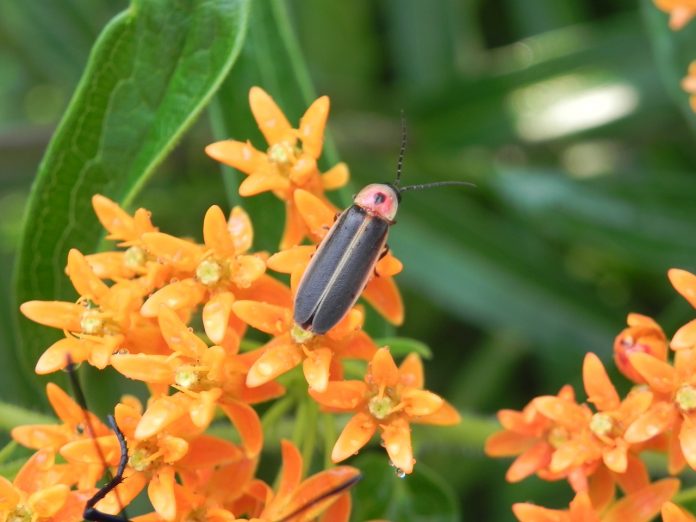The first firefly of the year appeared in my yard in late April.
Since then, numbers have increased until they are now more common than I’ve seen in years.
It seems appropriate that as Independence Day approaches, nature’s fireworks are getting hard to ignore.
Fireflies
First, though, a few words of clarification.
Fireflies, or lightning bugs as my dad called them, are neither flies, nor bugs. They are beetles.
About 2,000 species belong to the family Lampyridae, insects capable of bioluminescence.
The light that fireflies produce is nothing short of amazing. It is cold light, produced biochemically with little energy lost as heat.
Compare that to an incandescent light bulb that gets hot to touch in just minutes. LED bulbs are certainly a step in the right direction.
The bioluminescent organs of fireflies are located on their abdomen. In the cells of the light organs, which are richly supplied with air tubes, is a chemical called luciferin.
When luciferin combines with oxygen in the presence of the enzyme luciferase, the chemical reaction releases energy in the form of light.
Reflector cells in the light organs magnify the intensity of the light so it’s impossible to miss nature’s light show on a warm summer evening.
Flash
Fireflies control their flash patterns by regulating the amount of oxygen that reaches the light organs through the air tubes.
Consequently, each species flashes a specific pattern that’s used to communicate during the breeding season.
Firefly flash patterns vary in a number of ways from species to species. Color ranges from almost white to yellow and green.
The duration of each flash, the interval between flashes, and the number of flashes vary.
Deceptive
Finally, different species are active at different times of night, and each has a distinct flight pattern.
This is a very effective means of communicating and would work perfectly if no one cheated. But some fireflies cheat.
For example, females of the genus Photuris can mimic the flash patterns of female Photinus fireflies.
A male Photinus firefly, flying about the edge of the yard, may see this flash coming from a tuft of grass or a shrub and approach with the idea that he has found a receptive mate.
However, when he gets close, the female Photuris, who is double his size, can seize and eat him.
The male Photuris can play a similar game. He can imitate a male Photinus in hopes of attracting a hungry female Photuris.
While she flashes to lure in the male “Photinus,” the male Photuris can get close enough to reveal his true identity and mate.
This game of who’s who can be difficult to follow. It’s a level of deception and trickery worthy of a Shakespeare play or even Russian spies.
It’s easy to study the flash patterns of fireflies in the backyard. I call it “gee-whiz science.”
After identifying the length and rate of the female flash pattern (the one in the grass), mimic it with a flashlight.
If your impression is good, males will approach in search of a receptive female.
If you can identify several different flash patterns, you will have identified several different species of fireflies. It’s much like recognizing different birds or frogs by their voices.
Though fireflies are well known, thousands of other species are capable of producing “living light.”
In tropical waters, tiny microorganisms called dinoflagellates create a path of light in the wake of ocean-going vessels.
In the ocean around the Antarctic, shrimp-like krill emit bursts of blue bioluminescence, perhaps to distract everything from jellyfish and sea birds to fish and baleen whales that eat krill.
And many tropical fish use luminous bacteria to create lanterns that can be used for protection, camouflage, and/or communication.
Some have lids that cover the light organs. These fish can turn their headlights on and off and are called flashlight fish.
One benefit of bioluminescence is that pulses of light may alarm or disorient predators pursuing tiny prey.
Another possibility is that the light may expose approaching predators to even bigger predators, which then eat the smaller ones.
To learn more about fireflies, visit www.mos.org/fireflywatch.














I have written a very special poem as my dogs, cat and were sitting in the evening grass watching a lovely display of fireflies. I really appreciate your article about the intracies of these awe-inspiring visions of light. I’m a Sooner born and bred, but I live in Missouri now. We see two to three months of these magnificent light shows. Thank you for sharing your wisdom about these light shows.